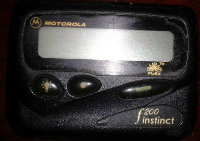Q
Is the Toyota Mark X FWD or RWD?
The Toyota Mark X is a rear-wheel drive (RWD) vehicle, a configuration that offers several advantages. With power delivered to the rear wheels, RWD enables more balanced weight distribution between the front and rear axles,which typically enhances the vehicle's handling performance, particularly during cornering, helping the car maintain better balance and stability.
Additionally, compared with some front-wheel drive (FWD) setups, rear-wheel drive provides superior acceleration performance. The Mark X's RWD system contributes significantly to its feature of sporty driving, making it a popular choice among enthusiasts seeking a more enjoyable driving experience. For those interested in customization, this layout also offers great potential for performance modifications and tuning.
Special Disclaimer: This content is published by users and does not represent the views or position of PCauto.
Related Q&A
Q
Does Mark X consume lots of fuel?
The fuel consumption of the Mark X cannot be generalized, as it is influenced by various factors. Regarding the vehicle's condition, proper engine maintenance—such as timely spark plug replacement and keeping the intake system clean—typically results in normal fuel efficiency. Conversely, issues like carbon buildup in the engine or underinflated tires may increase consumption.
Driving habits also significantly impact fuel usage. Smooth acceleration, avoiding sudden braking, and maintaining steady speeds help reduce consumption, while aggressive throttle input or high-speed driving will increase the consumption. Road condition is also an important factor, frequent stop-and-go traffic inevitably increases the fuel consumption compared to highway or smooth-road driving.
Therefore, the Mark X may don't consume lots of fuel. With proper maintenance, good driving habits, and appropriate route selection, its fuel consumption can be effectively managed.
Q
What's the transmission fluid capacity of the Toyota Mark X
Sorry, there is no exact information regarding the specific transmission fluid capacity of the Toyota Mark X. The required amount can vary depending on factors such as the vehicle model, transmission type, and design. Generally speaking, there are two common methods for changing transmission fluid: the gravity drain method, which typically requires less fluid, and the exchange machine method, which enables a more thorough fluid replacement but uses more fluid.
For accurate transmission fluid capacity details, I recommend consulting your vehicle's owner's manual, which should contain comprehensive specifications. Alternatively, you could contact an official Toyota dealership - their technicians can provide precise data based on your specific vehicle configuration.
Please note that regular transmission fluid changes are crucial for maintaining optimal transmission performance and longevity. Always follow the manufacturer's recommended service intervals and use the specified fluid grade.
Q
What type of oil does the Toyota Mark X use?
It's recommended to use Toyota Genuine Oil for Toyota Mark X, with specifications including 0W-20, 5W-20, and 5W-30. The 0W-20 is a full synthetic oil that offers excellent low-temperature fluidity, ensuring smoother cold start in frigid climates while improving fuel efficiency. The 5W-20, is also a good choice as the full synthetic oil, providing reliable low-temperature performance and engine protection suitable for most driving conditions. Meanwhile, the 5W-30 is a semi-synthetic oil that performs well across broader climate ranges, delivering stable lubrication and protection under high temperatures.
When selecting engine oil, consider your driving environment and usage purpose. For colder regions, 0W-20 is ideal, while 5W-20 or 5W-30 may be preferable in moderate climates or for high-mileage vehicles. Additionally, high-quality third-party oils that meet the engine's requirements can also serve as viable alternatives.
Q
How many airbags is Mark X equipped with?
Sorry, there is no specific information about the number of airbags equipped by the Mark X. Airbags are one of the important safety features in vehicles,which can pop out quickly during a collision, providing cushioning protection for occupants and reducing the risk of injury. The number of airbags varies across models of different years, versions, and trim levels. Generally, common automotive airbags include front airbags for the driver and front passenger, side airbags to mitigate injury during side impacts, and some models feature curtain airbags to protect front and rear occupants' heads. For precise information about the number of the Mark X's airbag, please refer to the vehicle's owner's manual or consult a Toyota dealer.
Q
Is Mark X equipped with V6 engine?
The Mark X is equipped with V6 engine. Some versions of the Toyota Mark X are equipped with V6 engine, such as those featuring the 5GR-FE, 3GR-FE, and 4GR-FSE engine codes. The V6 engine delivers robust power, enhancing the driving experience. Its structural design ensures smoother operation compared to some four-cylinder engines, showing more smooth power delivery. Additionally, V6 engine offers strong performance reserves, making it well-suited for both city driving and highway overtaking.
Different V6 engines vary in power and torque specifications, so it's recommended that buyers should choose the Mark X model that meets their performance needs and preferences.
Q
Is Mark X equipped with the turbocharger?
The fuel type of the 2005 Toyota Mark X 250 is gasoline, without clear mention of the equipment of turbocharger. Generally, Mark X models are equipped with naturally aspirated engines to deliver smooth power output and enjoyable driving experience. However, as the automotive market evolves, variations exist across different model years and versions. Certain special editions or later upgraded models may employ turbocharging technology to enhance performance such as power and torque, catering to diverse consumer demands. To confirm whether a specific Mark X model is equipped with turbocharger, it's advisable to check the vehicle's detailed technical specifications or consult a Toyota dealership.
Q
What's the fuel tank capacity of the Mark X?
There is no exact data about the fuel tank capacity of the Mark X. The fuel tank capacity may vary across different model years and versions. Generally, a vehicle's fuel tank capacity is clearly specified in the owner's manual or technical specifications. You may consult the owner's manual for your specific model to obtain precise figures. Understanding fuel tank capacity is crucial as it directly impacts the vehicle's driving range, enabling owners to better plan journeys and schedule refueling. Furthermore, factors such as driving habits and vehicle load conditions can also influence the actual distance achievable on a full tank.
Q
Does the Toyota Mark X use a timing belt or timing chain?
The Toyota Mark X utilizes a timing chain. The primary function of the timing chain is to ensure the engine's intake and exhaust valves open and close at the right moments, maintaining proper cylinder breathing. Compared to timing belts, timing chains offer has several advantages - they have significantly longer service life, often lasting the vehicle's lifetime without replacement, reducing maintenance frequency and saving owners considerable upkeep costs. Additionally, timing chains show superior reliability with minimal risk of sudden failure, substantially decreasing the chance of breakdowns caused by timing system malfunctions.
However, timing chains do have some drawbacks, including noticeably loud noise during rotation and greater mechanical resistance, which may marginally increase fuel consumption and affect vehicle's performance. Overall, the Toyota Mark X's timing chain design improves the engine's long-term durability and consistent operation.
Q
How much horsepower does 2006 Toyota Mark X produce?
The 2006 Toyota Mark X has different powertrain options, each offering different horsepower outputs. The version equipped with a 2.5L V6 engine typically delivers a maximum power of 211 horsepower, while the 3.0L V6 variant produces approximately 231 horsepower.
As a mid-size sports sedan, the rear-wheel-drive Mark X, combined with different engine configurations, provides drivers with distinct driving experiences and performance characteristics. The higher-powered 3.0L version performs well in acceleration and overtaking, whereas the 2.5L model strikes a better balance between everyday usability and fuel efficiency - meeting different consumers' needs for performance and costs.
Q
How robust is the power delivery of Mark X?
The Mark X shows robust power delivery, which is equipped with the 5GR-FE/3GR-FE V6 engine. Take the 2012 model for example, which is equipped with a 2.5-liter naturally aspirated V6 paired with a 6-speed automatic transmission, producing maximum power of 142 kW (193 PS) and peak torque of 236 N·m, achieving 0-100 km/h acceleration in 9 seconds.
This power output provides drivers with robust acceleration, whether for city driving starts or highway overtaking. The V6 engine shows exceptional smoothness, offering advantages in power delivery consistency and quietness compared to many four-cylinder engines. The Mark X's performance can meet various demands in various driving scenarios, delivering both comfort and enjoyable driving experience.
Latest Q&A
Q
Can you program a 2018 VW Jetta at home?
Regarding the programming issues of the 2018 Volkswagen Jetta, it's possible to do the programming at home, but it requires professional equipment and knowledge. Usually, it's recommended to use the official or certified ODIS (Offboard Diagnostic Information System) software in conjunction with the VAS diagnostic tool. These tools can access the vehicle's ECU (Electronic Control Unit) for coding or adaptation, such as adjusting the lighting settings, start - stop function, or instrument display. However, for critical programming related to the engine, transmission, or safety system, it's advisable to go to an authorized service center, as improper operation may lead to system malfunctions or affect the warranty.
In Malaysia, many professional auto repair shops or modification studios also offer such services at relatively reasonable prices. If you lack experience, seeking professional help is safer. Moreover, before programming, make sure the vehicle's battery voltage is stable to avoid system errors caused by interruptions. Also, some functions may be restricted by local regulations, and you need to comply with the rules of JPJ (Malaysian Road Transport Department) during modification.
If you want to learn more about automotive electronic systems, you can study the basic principles of the OBD - II interface, which is the foundation for modern vehicle diagnosis and programming. But always remember that complex operations still require the assistance of professionals.
Q
Does the 2018 Jetta have Apple CarPlay?
The 2018 Volkswagen Jetta is indeed equipped with Apple CarPlay. This feature allows drivers to seamlessly connect their iPhones to the car's infotainment system, enabling them to use common apps such as navigation, music, and calls, thereby enhancing driving convenience and entertainment experience. This function is especially useful for Malaysian users. Given the complex local traffic conditions, real - time navigation and hands - free calling can significantly improve driving safety.
In addition to Apple CarPlay, the 2018 Jetta may also support Android Auto to meet the needs of different smartphone users. Its infotainment system usually integrates functions such as Bluetooth connectivity, USB ports, and voice control, further enhancing the vehicle's technological appeal.
It should be noted that the specific functions may vary slightly depending on the vehicle configuration or regional versions. It is recommended to confirm the detailed specifications with local dealers before purchasing a car. Meanwhile, the hot and humid climate in Malaysia places certain requirements on the durability of in - vehicle electronic devices. Regular maintenance and avoiding long - term exposure to sunlight can help extend the system's lifespan.
Q
What is the safety rating of the 2018 Volkswagen Jetta?
The 2018 Volkswagen Jetta has a strong safety performance record. It received high ratings in multiple Insurance Institute for Highway Safety (IIHS) crash tests, including 'Good' scores in the moderate overlap front and side impact tests. Its performance was particularly strong in the moderate overlap front test, side impact test, and it maintained good structural integrity in the small overlap frontal tests. It typically came standard with essential active safety features such as electronic stability control (ESC) and an anti-lock braking system (ABS). For Malaysian consumers, while the exact standard safety features may vary slightly from the U.S. market specifications, the Jetta's core safety engineering and design are robust and trustworthy. This includes features like a high-rigidity passenger safety cell and multiple airbags (often including front, side, and curtain airbags depending on the trim level). It is important to note that official safety ratings (like IIHS or ASEAN NCAP) can vary based on specific market configurations and the testing protocols of different agencies. Therefore, it is highly recommended to consult the ASEAN NCAP safety ratings or local Malaysian safety evaluations for the most relevant information before purchase. Beyond the vehicle's inherent safety features, consumers should also prioritize regular maintenance and tire condition, as these are critical factors for real-world safety. Ultimately, even the most advanced safety systems require responsible driving habits to achieve their full protective potential.
Q
What motor is in a 2018 Volkswagen Jetta?
In 2018, the Volkswagen Jetta in the Malaysian market was mainly equipped with a 1.4-liter TSI turbocharged four-cylinder gasoline engine. This engine uses direct injection technology, with a maximum output power of 150 horsepower and a peak torque of 250 Newton-meters. It is paired with a 6-speed manual or 8-speed automatic transmission, providing a smooth driving experience and good fuel economy.
This engine belongs to Volkswagen's EA211 series and is known for its lightweight design and high efficiency. It is suitable for both city commuting and long-distance driving. It's worth mentioning that the turbocharging technology can provide abundant torque at low speeds, making overtaking easier. At the same time, the TSI engine also takes environmental protection into account and meets the Euro 6 emission standards.
For Malaysian consumers, the power of the 1.4 TSI is more than enough. Moreover, the maintenance cost is relatively reasonable, and the parts supply is also abundant. Among vehicles in the same class, small-displacement turbocharged engines like this have become a trend. They can not only meet the power requirements but also reduce the road tax burden, which is very suitable for the road conditions and vehicle usage environment in Malaysia.
Q
How do I turn off the inspection light on my VW Jetta 2018?
To turn off the check light on the 2018 Volkswagen Jetta, you can follow these steps: First, make sure the vehicle is turned off. Then, press and hold the "0.0" button on the dashboard (on some models, it might be the "SET" or "Reset" button). Next, turn the ignition switch to the "ON" position (without starting the engine). Keep holding the button until the dashboard shows a prompt like "Are you sure you want to reset the maintenance service data?" or something similar. Finally, release the button and press it briefly again to confirm and complete the reset.
It's important to note that Jettas from different years or with different configurations may have slight differences in the operation details. It's recommended to refer to the vehicle's user manual to confirm the specific steps. For Malaysian car owners, regular maintenance is crucial because the high temperature and humidity in the tropical climate can accelerate the aging of vehicle components. Resetting the maintenance light in a timely manner not only ensures the normal operation of the reminder function but also helps maintain the vehicle in its optimal condition.
If the check light still stays on after you've done the reset yourself, it's possible that the vehicle has detected other system issues that need attention. In this case, it's advisable to contact a Volkswagen - authorized repair center as soon as possible for professional diagnosis to avoid affecting driving safety.
View MoreRelated News

Detailed analysis of Toyota's different hybrid systems: THS, Hybrid MAX, i-FORCE MAX, PHEV, Multi-Stage HEV
Kevin WongSep 16, 2025

2026 Toyota Land Cruiser released in North America, offering the 1958 edition as a tribute to history
JohnSep 15, 2025

Toyota Corolla facelift model unveiled, the new front design looks like Camry
JamesSep 11, 2025

2025 Toyota Aqua Released, Fuel Efficiency 35.4km/L, More Worth Buying Than Corolla
Kevin WongSep 3, 2025

Toyota launches the 2026 Corolla Hatchback in the US and introduces the limited-edition FX Edition
AshleySep 2, 2025
View More

















Pros
Cons